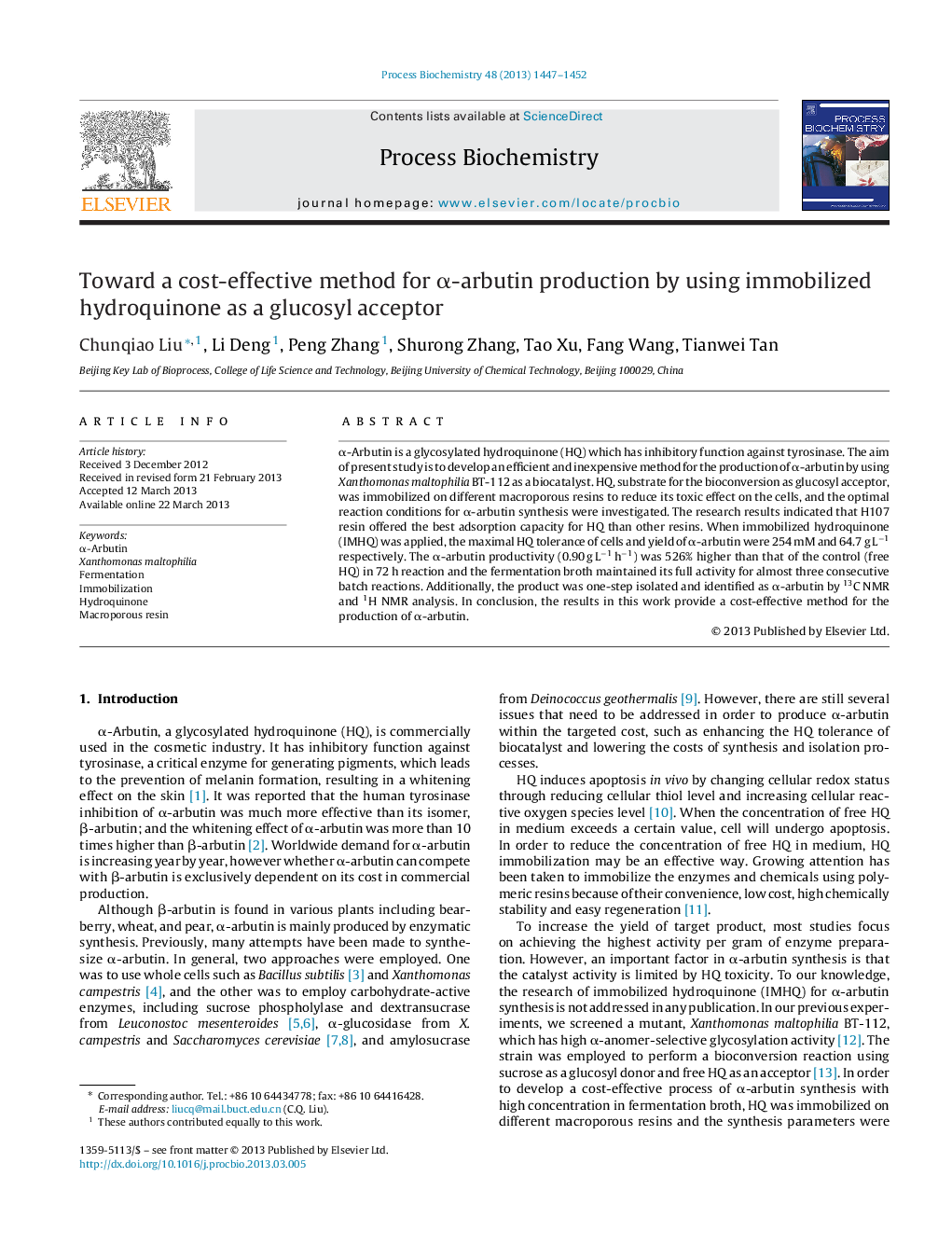| Article ID | Journal | Published Year | Pages | File Type |
|---|---|---|---|---|
| 34538 | Process Biochemistry | 2013 | 6 Pages |
•The study provided a cost-effective method for α-arbutin production.•H107 resin was used as hydroquinone immobilization medium.•The productivity of α-arbutin enhanced 526% (0.90 g L−1 h−1) in 72 h reaction by using IMHQ as a substrate.•The fermentation broth retained its 78.5% activity after 3 repeated batch reactions.
α-Arbutin is a glycosylated hydroquinone (HQ) which has inhibitory function against tyrosinase. The aim of present study is to develop an efficient and inexpensive method for the production of α-arbutin by using Xanthomonas maltophilia BT-112 as a biocatalyst. HQ, substrate for the bioconversion as glucosyl acceptor, was immobilized on different macroporous resins to reduce its toxic effect on the cells, and the optimal reaction conditions for α-arbutin synthesis were investigated. The research results indicated that H107 resin offered the best adsorption capacity for HQ than other resins. When immobilized hydroquinone (IMHQ) was applied, the maximal HQ tolerance of cells and yield of α-arbutin were 254 mM and 64.7 g L−1 respectively. The α-arbutin productivity (0.90 g L−1 h−1) was 526% higher than that of the control (free HQ) in 72 h reaction and the fermentation broth maintained its full activity for almost three consecutive batch reactions. Additionally, the product was one-step isolated and identified as α-arbutin by 13C NMR and 1H NMR analysis. In conclusion, the results in this work provide a cost-effective method for the production of α-arbutin.
